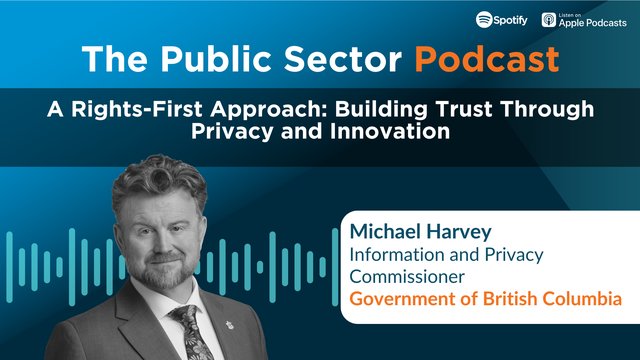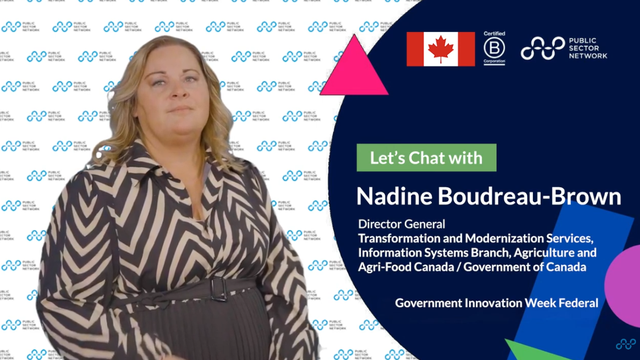Enhancing Data Security by Building Better Systems
Distributed systems and government administration – making the social contract smart

Nick Davies
Innovation Lead
HM Revenue & Customers (UK)
Using and understanding blockchain and DLT
In our ever-changing world, there is a constant quest to make things easier, better, smarter. One of the manifestations of that in recent years is in the form of disruptive technologies, which has largely led to the gig economy. Where would we be without Uber, Airbnb, Ebay, Twitter or Amazon? One of the original disruptors was blockchain, or more accurately, distributed ledger technology (DLT), which is the tech behind it. In essence, DLT is a decentralised database managed by multiple participants, and Blockchain is a type of DLT which records information in a digital transactional chain, in a way that makes it nearly impossible to change or hack, thus its popularity, usefulness and limitless potential.
Nick Davies , the Innovation Lead at Her Majesty’s Revenue & Customs in the UK, says he has been “interested in the potential for blockchain for some years,” and describes it as “the art of the possible.” In fact, in 2015 in a report produced by Sir Mark Walport, the Chief Scientific Adviser to the UK Government, he contributed a paragraph in the introduction “which I thought would not make it into the final version, but did. I think this is what we are really talking about:”
“DLT provides the framework for government to reduce fraud, corruption, error and the cost of paper-intensive processes. It has the potential to redefine the relationship between government and the citizen in terms of data sharing, transparency and trust.” [ 1 ]
One of those current potentials is in “how we emerge from the current crisis. How can this technology help re-establish that relationship between the government and the citizen?” Indeed, the technology is available and if western democracies don’t use it, “then other states with less clear commitment to our values will do so.” At the same time, there needs to be a distinct reason to use the technology. “We need to put policy first. It’s no good leading with the technology.” If used correctly therefore, blockchain and the DLT tech behind it will become ubiquitous.
[1] ‘Distributed Ledger Technology: beyond block-chain’, A report by the UK Government Chief Scientific Adviser
”
“In a few years we’ll stop talking about it and it will just be part of the operating system that we accept and take for granted every time we turn on our computers. This isn’t just about technology. It’s about a change in the way that people interact, transact, contract, and in the ways people exchange, value and trust both data and identity. Those things are fundamental to the way in which governments are run.”
The four Ps of blockchain development and acceptance
To really leverage what blockchain can do, there are four areas or concepts that need to be understood. “These are my personal views,” but there is substance behind them:
DLT, or a “distributed system,” would allow people to collaborate and come up with ideas together “within the system so that they can make informed decisions in broadly real-time.” This will only work however if the current model of government changes “for the benefits of both the administration and the citizen.” A current social contract exists between the two parties, but it dates back “to the late 18th century.” It hasn’t been updated much since then, and if it has, then “it hasn’t permeated through to departments like mine.” So therefore it’s about “making the social contract smart” to re-establish trust. It is notable that countries that are “doing best in terms of coping with the COVID-19 crisis are the ones where trust between the citizen and the state is at its highest. This shows what we need to do.”
Policy –
“This is about how can the technology contribute to the achievement of a policy end.” Some years ago, the UK Department for Work and Pensions “developed a blockchain-based distribution capability so that people could get their welfare payments on their phones” using DLT tech. “It helped them with budgeting and reducing the costs of payments.” By all accounts, it was deemed to be “an excellent system, and we even met with then (Australian) Treasurer Scott Morrison, who said it was a much better system than the one being used in Australia.” However, it never progressed beyond a proof of concept “because we couldn’t bring the policy people with us.” They didn’t understand the tech and couldn’t see how it could work without traditional concepts and banks. “We learned a valuable lesson. There is no point putting the technology in front of the policy agenda. The pathway to hell is paved with proofs of concept.”
Putting stuff together –
The technology on its own is useful, but it’s “the combination with other technologies that really makes a difference.” For instance, currently there are smart technologies as well as “the internet of things (IoT), artificial intelligence and machine learning. We are not too far off from getting all of these processes in the same place, operating at the same time as part of the one ecosystem that we can all safely engage in.”
Practicalities –
In many ways, DLT could make many processes in government easier and better. But “we can’t expect big changes all at once. We’ve got to pick our cases and go with them.” Two practical examples show what DLT is doing and can do:
- SME data hub – Many governments have “spent billions” to ensure that their countries get through COVID-19. But that means that “there is a big debt crisis about to happen.” SMEs are likely to be worst affected. “What better use of DLT is there than to develop a distributed mechanism for the generating data about those SMEs so that we can tell in real-time what their viability and liquidity is, and then make decisions about debt collection and tax liabilities.”
- Reducing friction in trade – DLT has real potential to “make trade between countries as easy and as frictionless as possible.” A proof of concept has already been launched to ease the process of exporting Australian wine to the UK and the rest of Europe. It uses “physical data through the IoT to track both the provenance and the transit of the goods.” And it also manages all the paperwork in the platform as well. “We found that there were 23 different documents to get the stuff out of Australia, and about 90% of all the data on those documents was exactly the same. That’s bonkers!” There are currently “early-stage discussions” with the Australian Border Force and other departments, including inter-government agencies. “To me, the killer use case for DLT is in the management of international trade and cross-border and customs transactions.”
”
“The real question is what will a distributed world look like in 5 or 10 years? What are the policy, legislative and governance arrangements that need to be in place in order to make that a reality? That is the real power of what DLT and blockchain can do.”




































